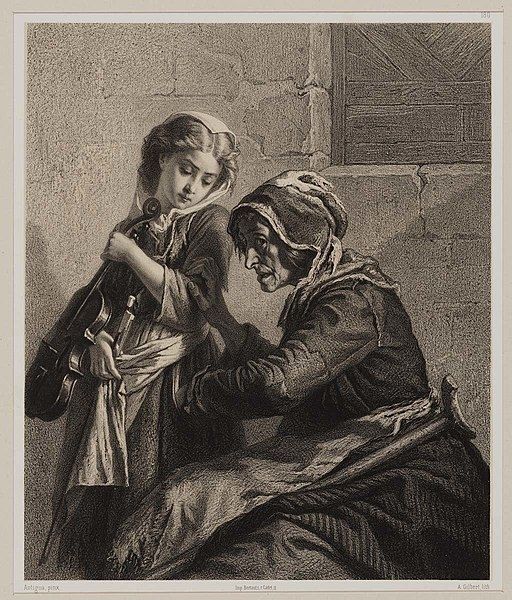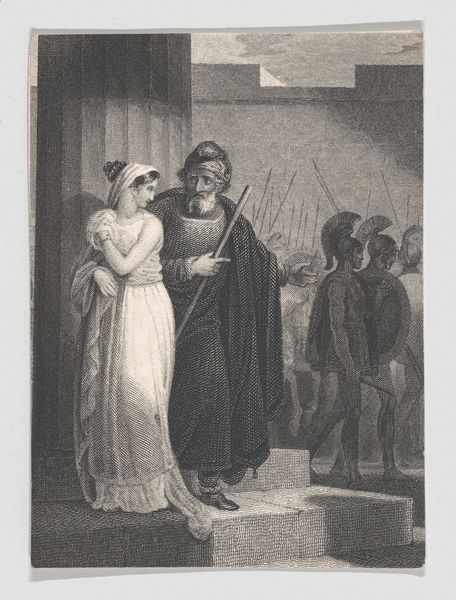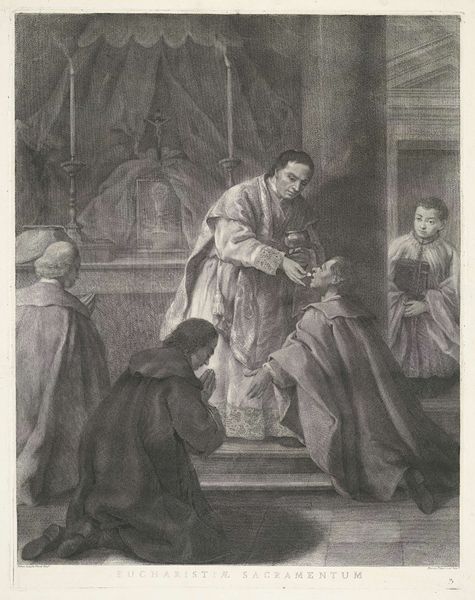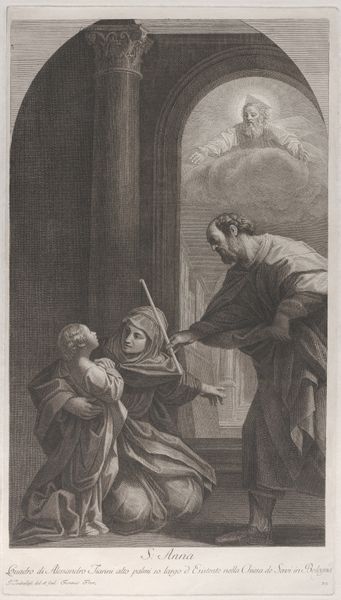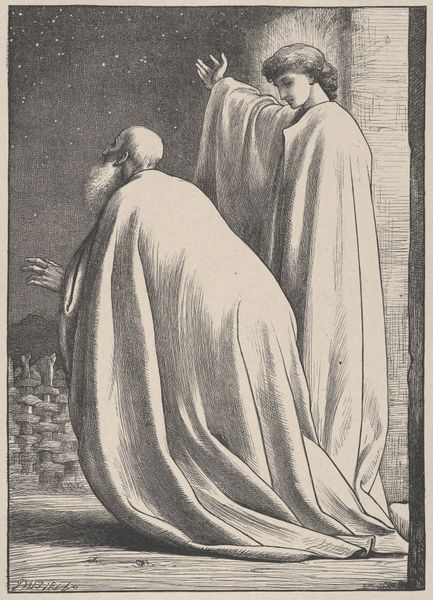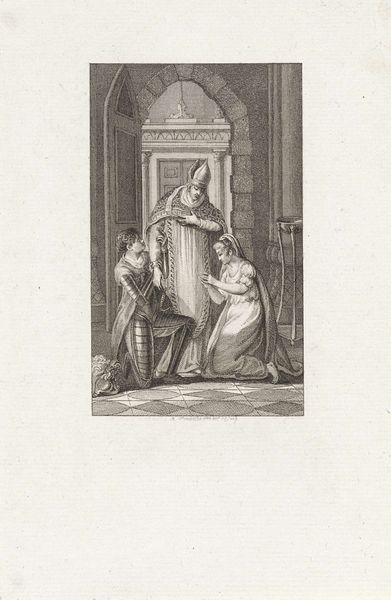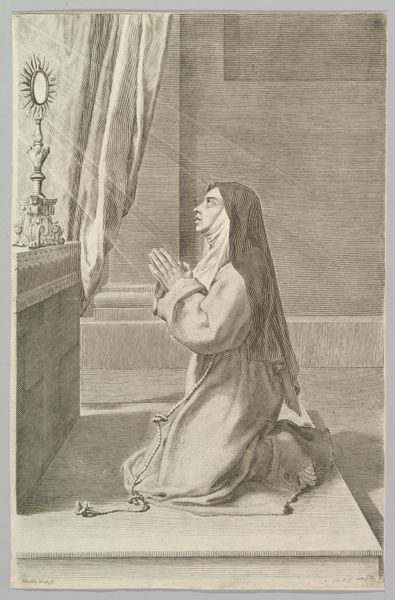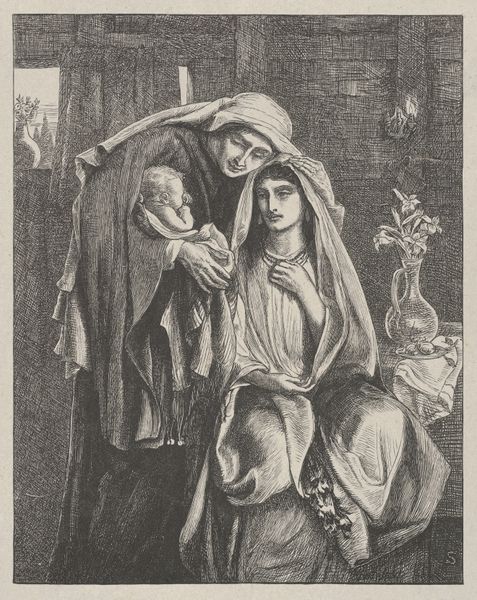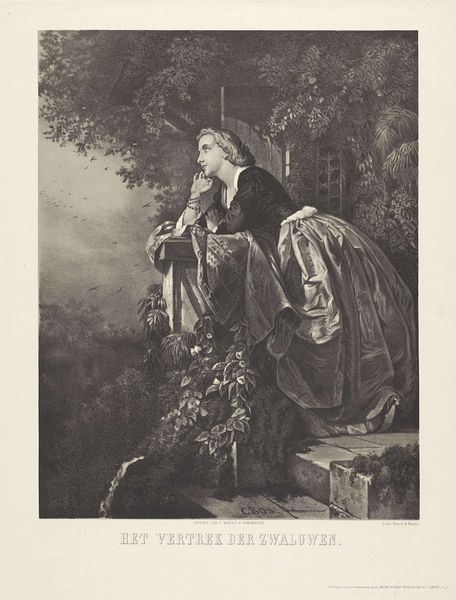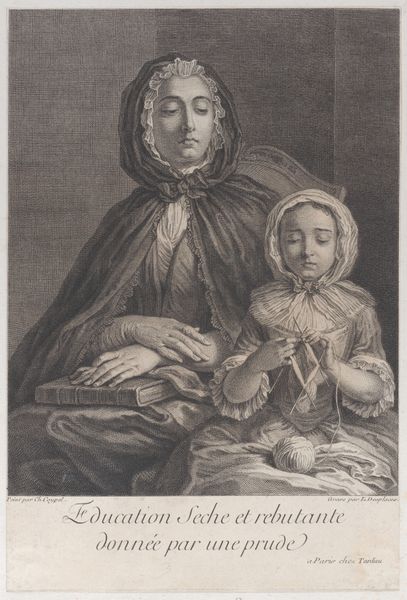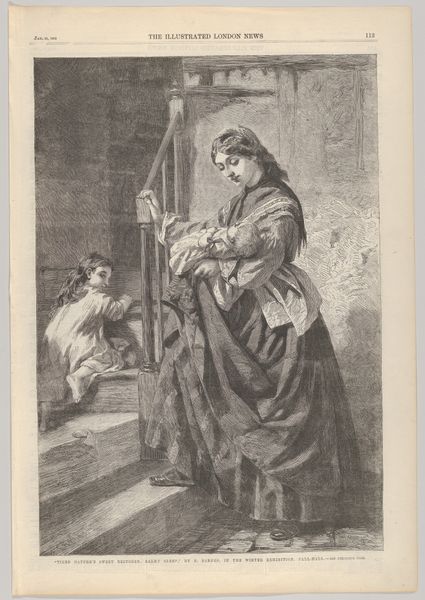
drawing, print, photography
#
portrait
#
drawing
#
narrative-art
# print
#
sculpture
#
black and white format
#
photography
#
black and white
#
genre-painting
#
history-painting
#
academic-art
#
realism
Copyright: Public domain
Curator: This is Achille D'Orsi's drawing from 1864, titled "Marguerite in church listening to the Dies Irae." It's a compelling piece, made with print and drawing media, rendered in monochrome. Editor: A hush falls over me looking at this! Immediately, there's something profoundly mournful about it. It's more than just piety. Curator: Absolutely. "Dies Irae," the title tells us, is Latin for "Day of Wrath"—a hymn about Judgment Day. D’Orsi places Marguerite within this moment, highlighting themes of judgment, repentance, and maybe, even despair. Notice the contrast between the women; the elder, stoic, and the younger kneeling. Editor: Yes, their postures tell such different stories. The elder seems almost resigned, standing stiffly in prayer. The younger one, she's actively engaged with the text. Is she seeking solace, or grappling with something within its pages? It makes you wonder what narrative lurks behind these characters and that medieval-looking inscription at the top of the picture. Curator: Well, it certainly evokes the tradition of narrative painting, doesn't it? With its roots in both history and genre painting, this drawing may touch upon a well known dramatic story. As for the inscription, these were frequently found on memorials to offer remembrance. I am interested in the psychological implications: How might this “day of wrath” stir up unconscious anxieties and guilt within her, aligning religious dogma with deeply personal fears. Editor: Interesting thought! The way the artist uses shadow and light—very dramatic! Almost theatrical, guiding the viewer's eye. And the fine detail! It feels intimate despite the grand scale of the church architecture behind them. Curator: And yet the composition also lends to its formal reading: the geometry is really quite superb. Editor: I love that even in stark black and white, the image carries so much emotional depth. It is not hard to read her remorse as it reverberates even now! Curator: Agreed. The piece is more than just an exercise in realism. It presents an archetypal conflict that speaks volumes to universal themes. Editor: It definitely gave me a lot to think about; perhaps there's even a small spark of hope, buried deep in the shadows of that church.
Comments
No comments
Be the first to comment and join the conversation on the ultimate creative platform.
